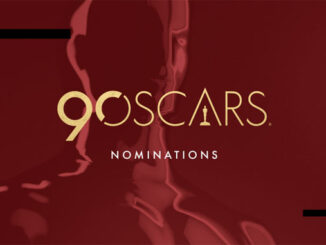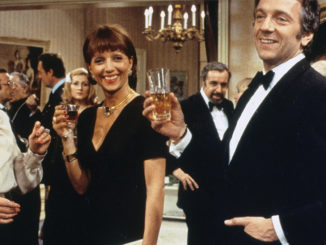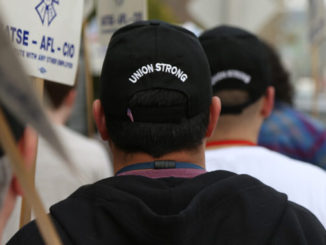
by Ray Zone
Married to legendary film editor Sam O’Steen for 23 years, Bobbie O’Steen compiled the many discussions and interviews with her husband about editing into a memoir entitled Cut to the Chase that was published in 2002. Reviewed in these pages in the MAY-JUN 06 issue (see attached story), Cut to the Chase is a primary book on the craft of editing featuring insights from the man who edited films such as Who’s Afraid of Virginia Woolf? (1966), The Graduate (1967), Cool Hand Luke (1967), Rosemary’s Baby (1968) and Chinatown (1974).
O’Steen’s new work, The Invisible Cut: How Editors Make Movie Magic, will stand as a deft introduction to the “invisible art” of editing and would prove highly useful as a textbook. Her language is direct and the complex craft of editing is clearly explained. Comparing the work of the motion picture editor to that of the stage magician, O’Steen begins with fundamentals and then moves to examples of classic films to illustrate the hidden magic of the editor. Very simply put, the editor decides what is seen on the screen and how long it will be seen. But in this obvious task is great subtlety.
The editor is constantly “taking the audience’s pulse,” observes O’Steen. There is a kind of mystery to the craft and, in fact, editors themselves are often elusive, by virtue of being essentially non-verbal and visually oriented by nature. In addition, “many editors have actually done their best work with mediocre films, because they salvaged a movie that otherwise would not have been viable.” O’Steen, who has been immersed in their world for years and is now an editor herself, speaks with a high degree of authority.
Editors, she notes, seem never to be completely satisfied and view life in terms of edits––especially when someone makes a joke or tells a story that goes on too long. “When people notice editing, it’s probably bad,” commented the late Sam O’Steen. “You’re trying to tell a story. It’s not about somebody showing off.” The author’s father, Richard Meyer, was also the noted editor of Butch Cassidy and the Sundance Kid (1969), and that film is also examined in this book.
Offering both a fundamental and developmental look at the editor’s craft, O’Steen demonstrates with her second book just how much she lives and breathes this essential art.
It is the editor, O’Steen believes, who must “pull the rabbit out of the hat” and make the audience believe in the act of motion picture magic. The editor is the “seducer” who anticipates needs and feelings, as well as the “deceiver” who tricks us into believing that we’re experiencing real time instead of movie time. In the same way that a magician distracts the audience from the setup of a trick with a sweep of his cape, the editor uses movement on screen as a species of sleight-of-hand for the eye.
Ideally, though it may not regularly occur, the director should see a cut of the film before the cast is released. The amount of cut film a director sees during a production may depend on the level of his or her confidence in the editor as well as the degree of interaction between the two. In fact, the director will be able to maintain a certain degree of objectivity by letting the editor wrestle with the film, at least initially.
In a separate chapter, O’Steen explores the dynamics of interaction between the director and editor and she points out that their relationship is much like a marriage. “Even when the marriage is good,” O’Steen cautions, “the editor must always be able to choose his battles and not fall into the trap of needing credit for an idea or being right for its own sake.” The insights offered here are cogent and are not O’Steen’s alone. A fine interview with Carol Littleton, ACE., editor of Body Heat (1981) and The Big Chill (1983), is included in this chapter and Littleton discusses her longtime editorial “marriage” with Lawrence Kasdan, who directed both of these films.
The chapter titled “Mastering the Magic” offers vital nuggets of practical advice. The most cogent example was derived from Sam O’Steen: “Movie first, scene second, moment third.” This should be the order of importance for every cut made. A few other examples, short and sweet, are: “As long as it’s working, don’t cut,” and “What moves and makes noise attracts attention.” And, above all: “The best cut is the one you never see.”
There is a kind of mystery to the craft and, in fact, editors themselves are often elusive, by virtue of being essentially non-verbal and visually oriented by nature.
The last part of the book deals with highly detailed analysis of scenes from specific films such as Twelve Angry Men (1957), The Graduate and Chinatown using photographic frame grabs and diagrams of the shots involved. These chapters are exhaustive in their clinical examination of shot dynamics, intercutting and eyelines. Here is where a beginning student of editing will find a motherlode of information about those essential choices the editor must make and the narrative dynamics involved in making a scene actually work. Students of these films will also want to use the stop-frame function of the DVD player to minutely examine the scenes that O’Steen discusses.
A nicely formatted series of “contact sheets” at the end of the book shows the running edits of each of these sequences as thumbnail frame grabs. There could be no more useful an analysis of edit flow than is offered here. Offering both a fundamental and developmental look at the editor’s craft, O’Steen demonstrates with her second book just how much she lives and breathes this essential art. Even experienced editors will want to spend time with her in the pages of this highly articulate tome.





